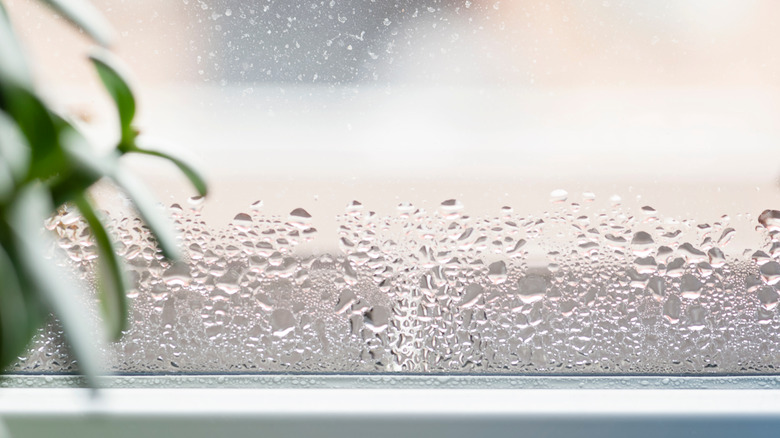The Reason There's Water On The Inside Of Your Windows
Have you noticed unwanted water building up on the inside of your windows? While condensation inside your windows may seem like a minor annoyance at first, it could actually be a telling sign that there are some issues within your home.
First, the good news. If water is appearing on the interiors of your windows, particularly in your bathroom or kitchen after showering or stove-top usage, then it could just be a result of steam. This type of condensation is not that big of a deal, nor is it particularly harmful. Usually turning on a fan in your bathroom or kitchen can help alleviate the problem.
However, excess moisture that builds up throughout your home's windows long after you've showered, used your stove, or just in general, can be damaging. This type of condensation might mean that your home isn't being properly ventilated, causing high levels of humidity. So, why are high-humidity levels and condensation on the inside of your windows bad? Keep reading to find out.
Water in your windows can cause unhealthy mold and mildew
High-humidity levels throughout your home can cause excess moisture to condense not just on your windows, but your couch, bed, dining-room table, and more. This moisture then becomes the perfect place for breeding hazardous mold and mildew growth, via Eco Home. So, how can you improve your home's humidity levels and get rid of window condensation?
According to Lyle Kvarnlov, product and service manager for window and door manufacturer Marvin, purchasing a hygrometer to test and monitor your home's humidity levels is a good start. Kvarnlov suggests following The Better Business Bureau's advice by maintaining a "25 to 30-percent relative indoor humidity" level. If your home is over the recommended humidity percentage, then you should start looking for ways to control and limit the amount of humidity coming into your home. According to Eco Home, changing simple personal habits can decrease "up to half" of your home's humidity levels, which can easily solve your fogged windows. From being selective with your indoor plants and AC model units, to checking for water leaks and installing certain mechanical ventilation systems, there's plenty of ways to get control your home's high-humidity levels. Other suggestions include reducing the temperature and length of your showers, covering your pots and pans when you cook to reduce how much steam enters the air, and running a dehumidifier in one or several rooms of your house.
Tried all of Eco Home's suggestions and are still seeing condensation on the inside of your windows? Another reason for fogged windows, per Bob Vila, is a failing windowpane seal. When a window isn't properly sealed, drafty air can make its way into your home, meaning it may be time to replace your windows entirely.

